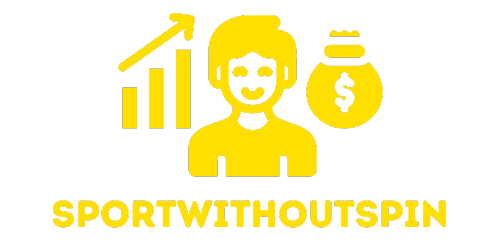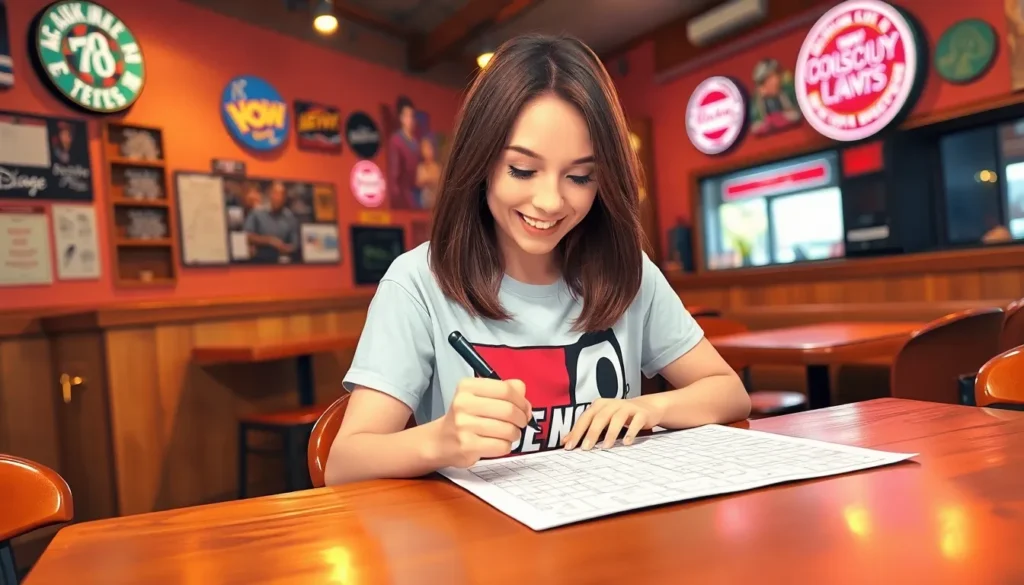In a world where binge-watching is a sport and memes reign supreme, pop culture crosswords have emerged as the ultimate brain workout. Forget about the gym; solving these puzzles is the perfect blend of fun and challenge. They take the latest trends and sprinkle in a dash of nostalgia, making it impossible to resist filling in those little squares.
Table of Contents
ToggleWhat Are Pop Culture Crosswords?
Pop culture crosswords represent a modern twist on traditional puzzles, integrating contemporary themes and trends. These puzzles feature clues related to current TV shows, movies, music, celebrities, and viral memes. In contrast to standard crosswords, they cater specifically to the interests of today’s audience.
Many enthusiasts enjoy solving pop culture crosswords as a way to stay engaged with current events and entertainment. They often reflect societal trends, tapping into the zeitgeist and allowing solvers to connect with their favorite cultural references. This connection enhances the overall puzzle experience.
Increasingly popular among diverse age groups, these crosswords serve both recreational and cognitive purposes. They engage the brain, offering mental stimulation while providing entertainment. The incorporation of familiar topics helps make solving these puzzles more accessible and enjoyable.
Puzzle creators design pop culture crosswords with varying difficulty levels, accommodating beginner to expert solvers. These variations ensure everyone can participate without feeling overwhelmed. Often showcasing clever wordplay and witty clues, these crosswords challenge solvers to think outside the box.
Many publications, both online and in print, feature pop culture crosswords regularly. They attract a broad audience, enhancing readership and engagement. By aligning puzzles with current topics, these publications maintain relevance in a fast-paced media landscape.
Engaging with pop culture crosswords provides not only a fun pastime but also a sense of community. Solvers often share their experiences on social media, discussing their favorite clues and solutions. This interaction fosters connections among fans and enhances the overall enjoyment of the puzzle-solving experience.
The Evolution of Crosswords

Crosswords have evolved significantly, influenced by cultural changes and technological advances. Traditional puzzles emerged in the early 20th century, with the first known crossword published in 1913 by Arthur Wynne. These early crosswords primarily focused on literary and historical themes, appealing to a different audience.
Historical Context
During the 1920s and 1930s, crosswords gained immense popularity in newspapers and magazines. The Great Depression contributed to their rise, providing an accessible and affordable form of entertainment. Puzzle enthusiasts embraced them as stimulating brain exercises, often sharing clues and solving techniques. Over the decades, various styles and formats, including cryptic and themed crosswords, emerged, catering to diverse audiences and preferences.
The Rise of Pop Culture References
In recent years, pop culture references have transformed crossword construction, reflecting contemporary society. Creators now incorporate themes from television shows, movies, music, and social media, aligning puzzles with current trends. This shift attracts younger solvers who seek relevant and engaging content. Many publications highlight these pop culture crosswords, increasing readership through user-friendly formats. Significant events, trends, and notable figures shape the clues, ensuring puzzles remain relatable and fun. Solvers relish the challenge of connecting pop culture knowledge with traditional solving strategies.
Why Pop Culture Crosswords Matter
Pop culture crosswords offer a unique blend of entertainment and mental exercise. They connect directly with modern interests, making them relevant and engaging for contemporary audiences.
Engaging with Modern Culture
Pop culture crosswords draw on current trends. They include references from today’s TV shows, blockbuster movies, and popular music. Fans easily relate to clues reflecting viral memes and celebrity news. Solving these puzzles allows individuals to engage actively with the culture surrounding them. This experience maintains interest in events and trends, promoting shared conversations within communities. Many solvers enjoy discussing their favorite puzzles on social media, highlighting the collective experience that arises from shared cultural knowledge.
Cognitive Benefits of Puzzles
Challenging the brain is an essential benefit of pop culture crosswords. Regularly solving these puzzles enhances cognitive function by promoting critical thinking and problem-solving skills. Participants often experience improvements in memory and vocabulary. Since different difficulty levels exist, beginners and experts can find suitable challenges. Engaging with puzzles serves as a workout for the mind, yielding enjoyment while reaping mental benefits. Many publications contribute to this trend, consistently publishing fresh content that resonates with various audiences.
Tips for Creating Your Own Pop Culture Crosswords
Creating pop culture crosswords enriches the puzzle-solving experience. Thoughtful design engages solvers while reflecting current trends.
Choosing Themes and Topics
Select a theme that resonates with current interests among your audience. Popular options include recent movies, trending TV shows, celebrity news, and viral memes. Consider integrating themes that evoke nostalgia, as these often enhance engagement through familiarity. Aligning topics with seasonal events or celebrations can attract attention; think of holidays, award shows, or major sporting events. Research current conversations and online trends to inspire topics that captivate solvers. By staying informed, creators can craft relevant and timely puzzles that resonate with today’s culture.
Balancing Difficulty Levels
A balance in difficulty ensures accessibility for different skill levels. Include a mix of easy, medium, and difficult clues to cater to a broad audience. Start with straightforward clues that encourage newcomers while strategically placing challenging elements throughout the puzzle. Simple associations and popular references can ease solvers into the experience. As the difficulty increases, incorporate less common facts or wordplay that requires deeper knowledge. Testing puzzles with a diverse group provides insight into effectiveness; gather feedback to fine-tune the challenges. Prioritizing this balance enhances enjoyment and fosters a rewarding puzzle-solving journey.
Pop culture crosswords have carved out a unique niche in the world of puzzles. They blend current trends with nostalgic elements to create an engaging experience for solvers. This modern twist not only entertains but also stimulates the mind, making it an appealing option for those seeking a fun challenge.
As these puzzles continue to evolve, their ability to reflect contemporary society ensures they remain relevant. By fostering community and encouraging conversations around shared interests, pop culture crosswords enhance the overall enjoyment of puzzle-solving. Whether one is a novice or an expert, there’s a crossword out there that caters to every taste and skill level.



